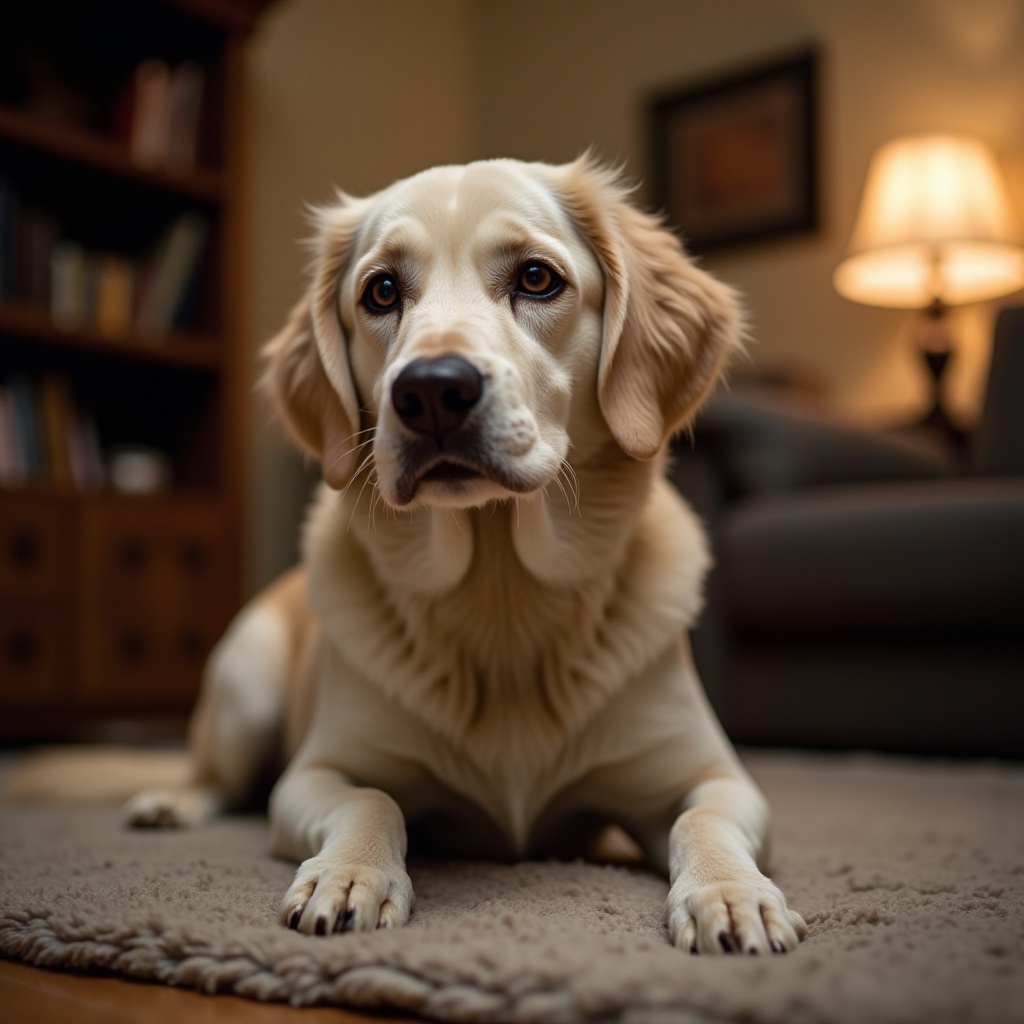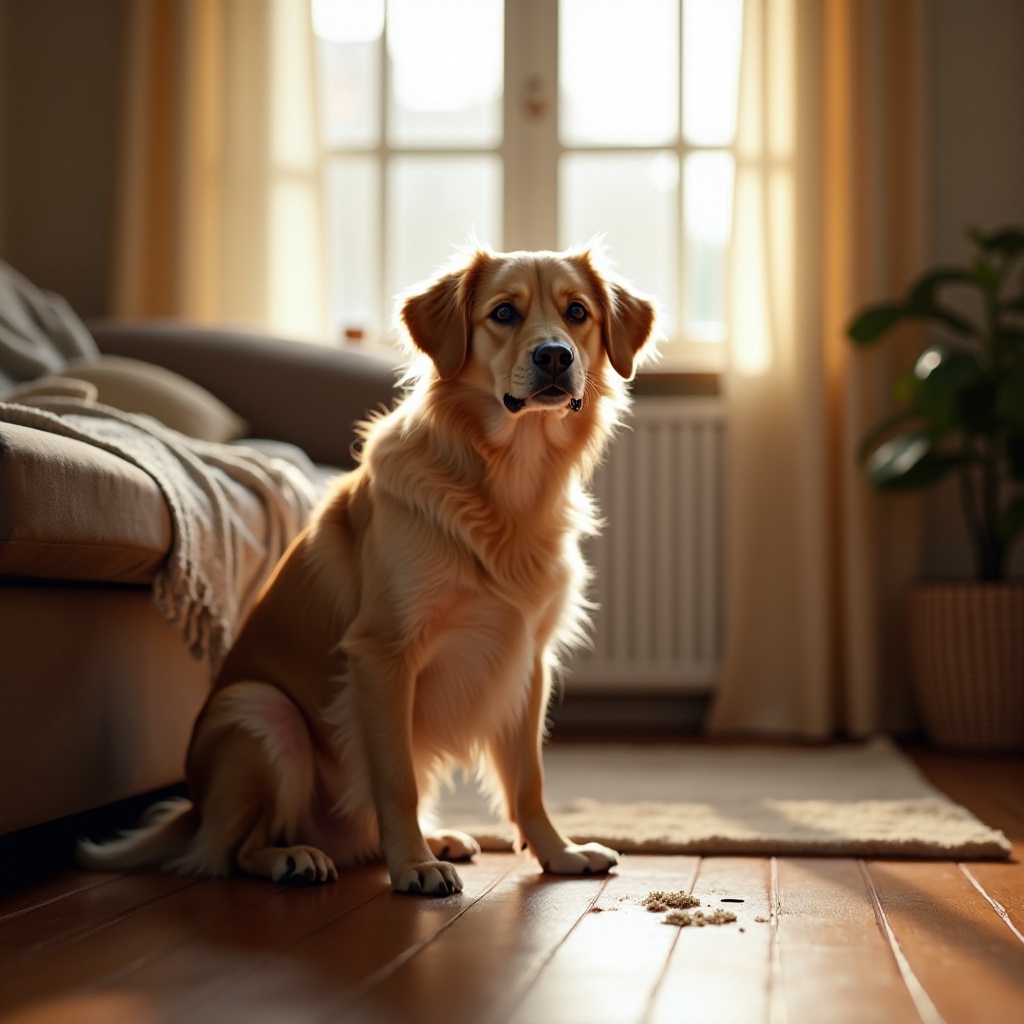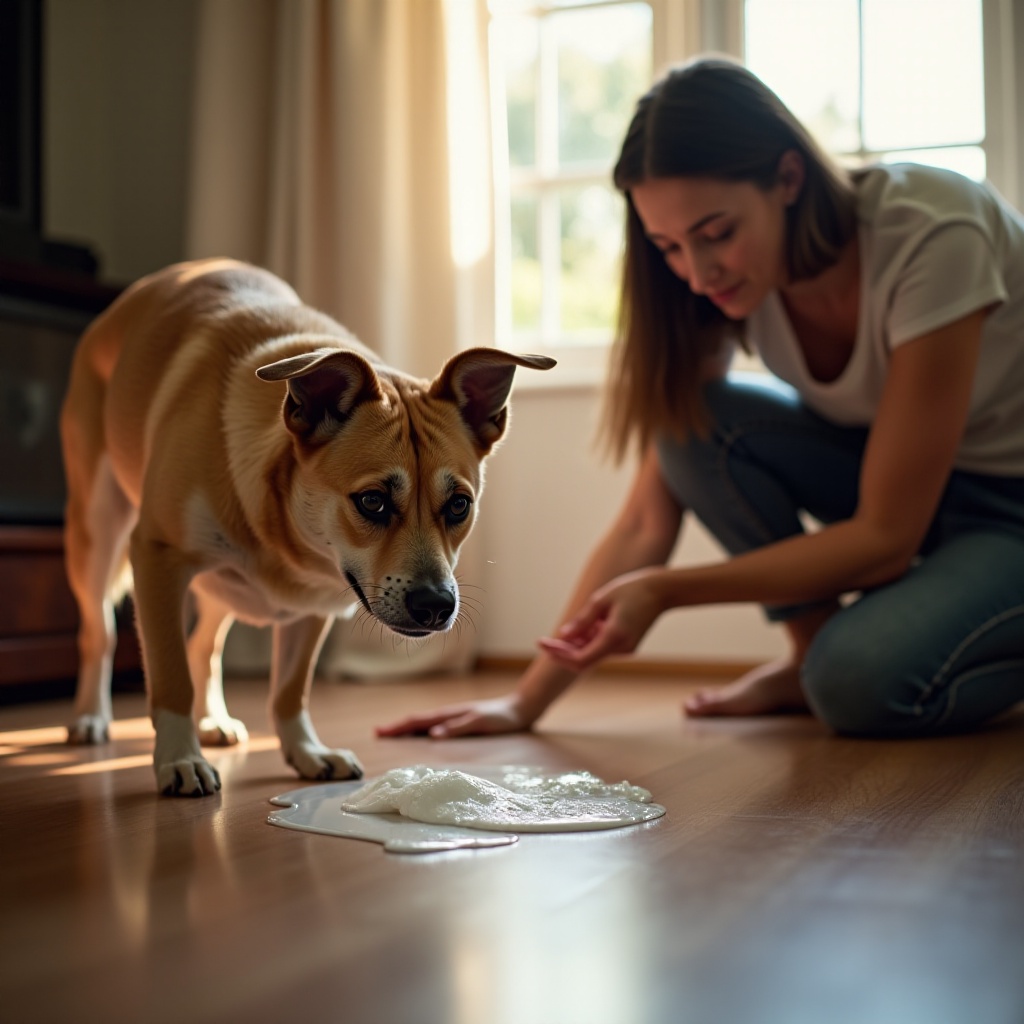Introduction
Seeing your once obedient and house-trained older dog start to have accidents indoors can be distressing. There are many reasons for this change in behavior, ranging from medical issues to behavioral shifts. Understanding these causes is the first step in addressing the problem and improving your senior dog’s quality of life. In this blog, we’ll explore the common reasons behind in-house accidents in older dogs, diagnostic methods, treatment options, preventive measures, and when to consult a professional.

Common Causes of In-House Accidents in Senior Dogs
As dogs age, they experience various changes that can contribute to bathroom accidents inside the home.
Medical Conditions
Senior dogs are more susceptible to health issues that can cause urinary incontinence. Common culprits include urinary tract infections (UTIs), kidney disease, and diabetes. UTIs can cause frequent urges to urinate, kidney disease can impair urine processing, and diabetes often leads to increased thirst and urination, making it challenging for older dogs to hold it until they get outside.
Behavioral Changes
Behavioral changes are another significant factor. Anxiety or stress from routine changes, new family members, or the absence of a beloved companion can cause older dogs to urinate indoors. Fear-related urination can also occur in response to environmental stressors, such as loud noises or new pets.
Cognitive Dysfunction Syndrome
Cognitive Dysfunction Syndrome (CDS) is similar to dementia in humans. It leads to confusion, forgetting trained behaviors, and overall disorientation. Dogs with CDS may forget where or when they should go to the bathroom, leading to accidents indoors.
Mobility Issues
Arthritis, hip dysplasia, and other joint problems can make it difficult for older dogs to get outside in time. If your dog can’t move quickly enough or finds it too painful to go out, they may end up relieving themselves indoors.
Understanding the underlying reason for your senior dog’s accidents is crucial for effective management.
How to Diagnose the Cause
Diagnosing why your senior dog is peeing in the house involves several steps you can undertake with the help of a veterinarian.
Observations and Record-Keeping
Start by observing your dog’s behavior and keeping detailed records. Note the frequency of accidents, the time of day they occur, and any changes in your dog’s routine or environment. Record additional symptoms such as changes in appetite, water intake, or activity levels. These observations can provide valuable clues to the veterinarian.
Veterinary Check-Up
A veterinary check-up is essential. Inform the vet about your observations. The veterinarian will conduct a physical examination and may ask for a urine sample to check for signs of infection or other abnormalities. It’s vital to rule out any medical conditions that may be causing the accidents.
Diagnostic Tests
Further diagnostic tests might be necessary. Blood tests can reveal issues like diabetes or kidney disease, while imaging tests like ultrasounds or X-rays can help identify structural problems within the urinary tract. These tests help in accurately pinpointing the issue, allowing for a more targeted treatment approach.
Once you have pinpointed the cause, you can explore appropriate treatment options.
Treatment Options
Treating in-house accidents in senior dogs depends on the underlying cause.
Medical Treatments
If a medical condition is to blame, medication or dietary changes might be required. UTIs can often be treated with antibiotics, while diabetes is managed with insulin therapy and dietary adjustments. Pain management is critical for mobility issues like arthritis. Medications or supplements such as glucosamine can relieve discomfort and improve mobility.
Behavioral Therapies
Behavioral changes may require a different approach. Anxiety relief, potentially through medication, consistent routines, or calming products like pheromone diffusers can help. Retraining may also be necessary, emphasizing positive reinforcement to encourage outdoor bathroom habits.
Environmental Adjustments
Modifying your home environment can also help. Provide easy access to outdoor areas with ramps or dog doors. Use absorbent pads or doggy diapers to manage accidents. Ensure that the areas where they rest are comfortable and close to where they can relieve themselves.
Combining medical treatment with behavior modification and environmental adjustments can make a significant difference in managing your dog’s condition.

Preventive Measures
Prevention is always better than cure. Implementing preventive measures can reduce the likelihood of accidents.
Regular Veterinary Care
Consistent check-ups are essential for catching potential health issues early. Regular screening can help monitor chronic conditions like diabetes or kidney disease, preventing them from worsening and causing accidents.
Adequate Hydration and Diet
Ensure your dog stays hydrated, but also monitor their water intake to prevent excessive drinking. A balanced diet tailored for senior dogs can help maintain overall health and proper urinary function.
Proper Bathroom Schedules
Establish regular bathroom schedules. Frequent outdoor bathroom breaks, especially in the morning and evening, can help. Consistency is key, so try to stick to a routine.
Using Dog Training Aids and Products
Dog training aids, such as pads or indoor grass patches, can be beneficial. These products can provide a designated area for your dog to relieve themselves and help minimize messes inside the house.
By following these preventive measures, you can help manage and reduce your senior dog’s in-house accidents.

When to Consult a Professional
Sometimes, the situation might require professional intervention.
Signs that Require Immediate Attention
Seek immediate veterinary consultation if you notice blood in your dog’s urine, frequent or painful urination, or any other sudden changes. These symptoms could indicate a severe underlying condition that needs urgent attention.
Seeking Help from Behaviorists
If medical treatments do not fully resolve the issue, consulting a professional dog behaviorist can be valuable. They can provide customized training programs and behavioral modification techniques tailored to your dog’s specific needs.
Conclusion
Understanding why your senior dog is peeing in the house is the first step towards addressing the issue. Whether it’s due to medical conditions, behavioral changes, or mobility issues, recognizing and diagnosing the problem is crucial. With proper treatment and preventive measures, you can help your furry friend maintain a better quality of life. Always consult professionals when in doubt to ensure your dog’s health and well-being.
Frequently Asked Questions
How can I tell if my old dog’s peeing is due to a medical issue?
Look for signs such as increased frequency of urination, changes in drinking habits, blood in urine, and signs of pain while urinating. Always consult with a veterinarian for a proper diagnosis.
Are there specific products I can use to manage my senior dog’s accidents?
Yes, numerous products can help, including absorbent pads, doggy diapers, and indoor grass patches. These can provide designated areas for your dog to relieve themselves and minimize indoor messes.
How do I retrain my old dog to pee outside?
Start by reinforcing existing training with positivity. Be consistent with bathroom breaks, especially after meals and naps. Use rewards and praises to encourage outdoor urination. Consult a behaviorist if retraining is challenging.
